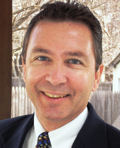 By Scott Kriner, Green Metal Consulting
By Scott Kriner, Green Metal Consulting
In 2012, the metal roofing industry caught wind of a rainwater runoff evaluation that was being planned by the Washington State Department of Ecology (Ecology) to supplement a 2011 investigation. Concerns over certain chemicals and metals in the Puget Sound were at the heart of the investigation. Since the Ecology felt that roofing was a significant source of chemicals and metals that were hazardous to aquatic life, a roofing industry advisory group was created to work with the department during the 2013/2014 time frame. The intent of the project was to address chemicals and metals of concern in the rainwater runoff that were being detected in the Puget Sound.
The year-long project used 18 constructed roof panel mockups to capture rainwater from 20 rain events. The runoff was then analyzed for total metals (arsenic, copper, lead and zinc), Polycyclic aromatic hydrocarbons & phthalates, and Polybrominated diphenyl ethers (flame retardants ). The types of roof materials that were built for the study included asphalt shingle, copper, concrete tile, prepainted HDG, treated wood shake, modified APP Build up, Modified built up with styrene butadiene styrene, EPDM, PVC membrane, TPO and 55%Al-Zn coated steel.
Other sources of these chemicals and metals had been identified, but this project was specifically focused on rainwater runoff from roofing. The literature is chock full of similar evaluations when it comes to metal roofing surfaces and zinc from other sources. In many cases, the results of those other studies were believed to be influenced significantly by the corrosive nature of the local environment from the pH of the rainfall and other environmental or climatic issues.
Ecology devised a collection system to catch rainwater runoff at the eave of the mock-ups for each type of roof. The collected rainwater running off the samples was compared to rainwater running off a glass control roof surface. The Ecology laboratory analyzed the content.
After the reports were prepared and shared with the Roofing Industry Advisory Group, it became apparent that some of the data from this recent project were not consistent with previous studies or those from the literature. For example, levels of zinc reported in the Ecology study were 96% lower that what was ascertained from the literature and the report did not indicate if those levels were hazardous to aquatic life. Suggestions to model the fate and transport of contaminants in runoff from roofing systems and treatment options were considered but ultimately not performed due to lack of funding.
The report was made available to the public. Some on the Roofing Advisory Group were concerned that legislators and regulators could pull data from the report out of context, and make their own conclusions with regard to the impact on Puget Sound. Ultimately, that is exactly what happened. Recently, Governor Insley, of WA, released a Policy Brief that identified zinc as a “toxic threat”, indicating that results of the roofing study had been completely ignored. Similarly, a draft Toxics Reduction Plan was released that specifically highlights galvanizing as one of the targets for source reduction measures. In response to new WA legislation, aimed at giving the Department of Ecology the authority to develop “chemical action plans” that could ban certain chemicals, the International Zinc Association (IZA) recently submitted a letter to the Governor’s office, along with letters from several galvanizers in WA to determine what criteria were used for prioritizing zinc for a chemical action plan.
This industry effort, called the Zinc Coalition, and spearheaded by IZA, has engaged the industries that have a stake in the use of zinc. That includes many manufacturers in WA, as well as trade associations and other entities who all share a common goal to educate the legislators and government to rely on sound science rather than incomplete reports such as the one that was released by Ecology.
An advocacy effort began to reach out to different levels within the governor’s office, and other technical or scientific advisory organizations in this field. Letters were sent to a variety of contacts and it appears that the effort is having positive results. Recently the Governor’s Senior science policy advisor contacted IZA to discuss issues and to provide input. This Advisor supports the action of the Zinc Coalition and recognizes the broader industry activities that include efforts to establish the state of science in water quality criteria for zinc, as recognized by the Environmental Protection Agency (EPA). Another encouraging result of the advocacy efforts is that IZA has made contact with a water quality manager within Ecology to discuss the criteria that were used to prioritize zinc.
At the same time, the legislation mentioned above has had a significant change. The Washington State Senate has proposed stripping away the authority and responsibility of Ecology to promote or discourage certain chemicals of concern. The Senate proposal would move that authority back to the state legislature so that industrial input can be weighed into the decisions.
The Zinc Coalition advocacy efforts will not simply be settled by succeeding in Washington. Other jurisdictions that require sound scientific input into the decision making process include the State of California's Department of Toxic Substances Control, the U.S. EPA Region 5 (Great Lakes region) and even Environment Canada.
The results would not be as impressive to date if it wasn’t for the breadth and depth of the Zinc Coalition that was created by the IZA. Sometimes it is beneficial to find common ground among various manufacturers, associations and organizations and to unite in their action. We hope that the Zinc Coalition will be successful in their efforts. There is strength in numbers.